Where the Bird is Photographed Makes A Difference in Final Quality
In this post we define and illustrate Component 10. Setting of the QSAR (Bird Picture Quality Self-Assessment Rubric).
10. Setting
The Setting is where the bird is photographed. Usually we think of birds as being in the wild, but some bird photographs are taken where we live, work, and play. I must admit up front that the quality rankings for Setting are rather subjective on my part. I value a picture of a bird taken in the wild (particularly after a valiant search) more than one of the same bird sitting at a bird feeder in my back yard. This is not to say that pictures of birds at bird feeders, or siting on a piece of rebar at a construction site can’t be beautiful, it’s just that I associate birds with the great outdoors; I rate bird photographs taken in a natural setting higher than those that include “the hand of man.” Extending that thought, the setting of the photograph may show the bird in its habitat or how it fits within the environment – these photographs will rate higher.
Here is the Setting Component from the QSAR:
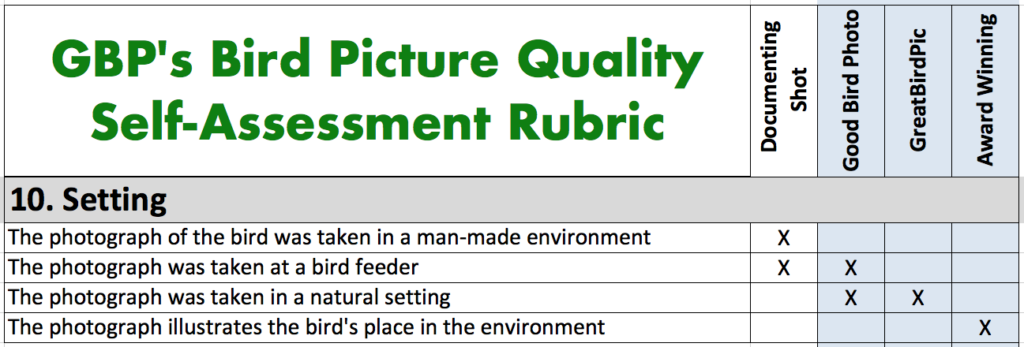
The four Levels of Quality shown reflect an increasing degree of naturalism in the setting of the bird; each are explained next with example photographs from the Four Types of Bird Photograph.
Level of Quality 1: The photograph of the bird was taken in a man-made environment = Documenting Shot
Although not refused, I discourage pictures of birds in captivity being posted on GreatBirdPics.com. Going down to the local zoo and snapping pictures of pink flamingos just isn’t the same as seeing them in wild. Therefore, pictures of birds in captivity are given the lowest quality rating – Documenting Shot.
Level of Quality 2: The photograph was taken at a bird feeder = Documenting Shot or Good Bird Photo
At times I have eight feeders in my backyard (tube, platform, squirrel-resistant, suet, two thistle, hummingbird and oriole). Once in a while I’ll take a picture of a bird at the feeders, like the Goldfinch and Indigo Bunting below at one of the thistle feeders. Not bad but because of the setting I would rate the photograph as a Good Bird Photo. I much prefer the the photographs below it of the same birds photographed in the wild (both rated GreatBirdPic).
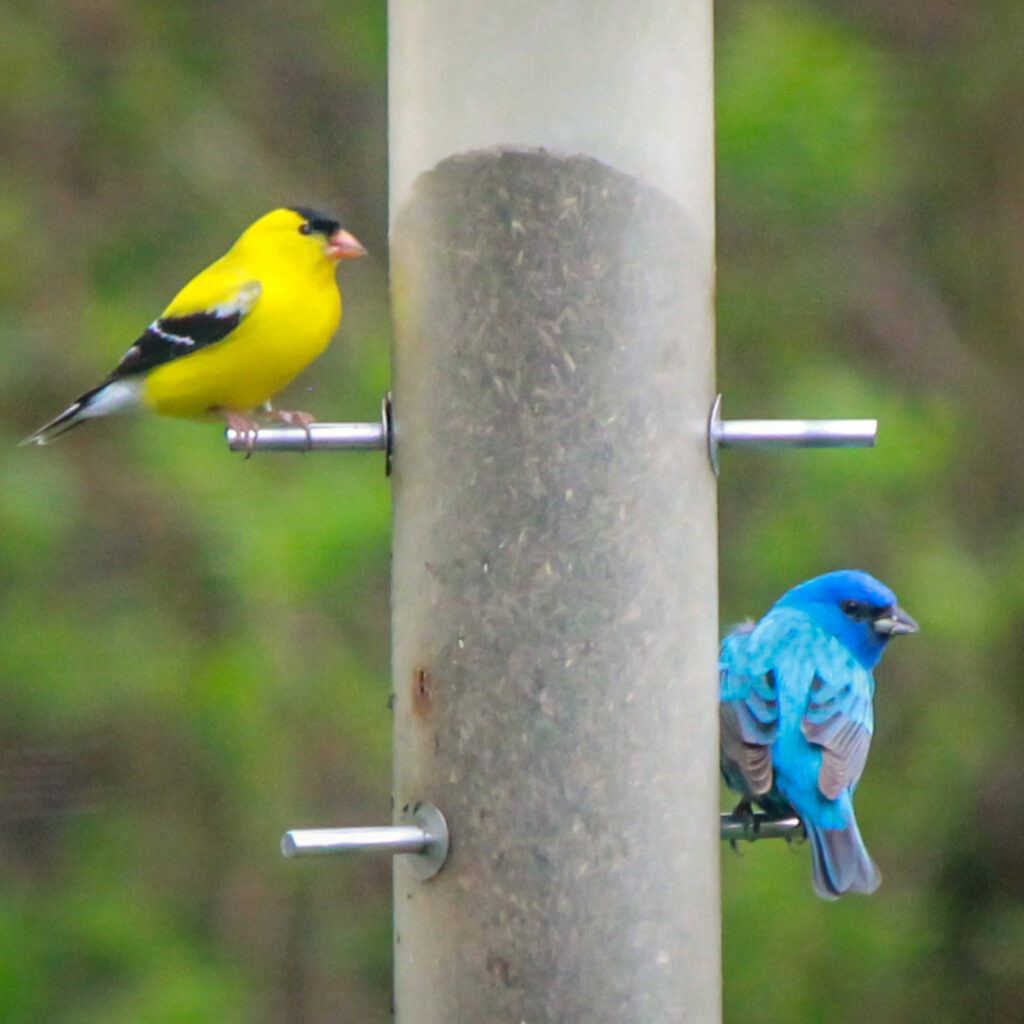
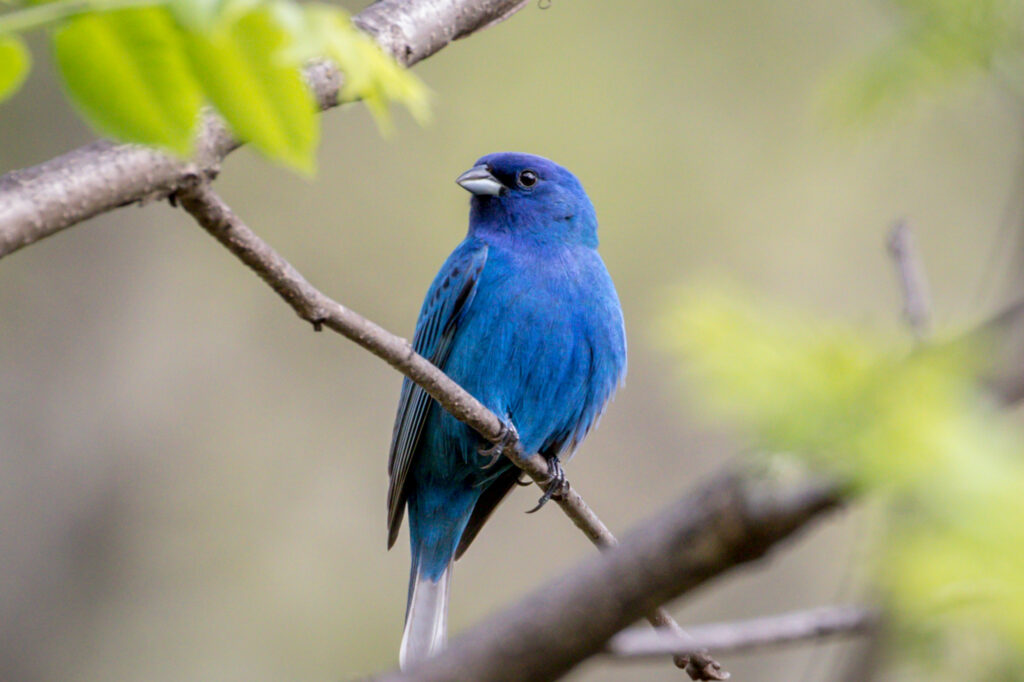
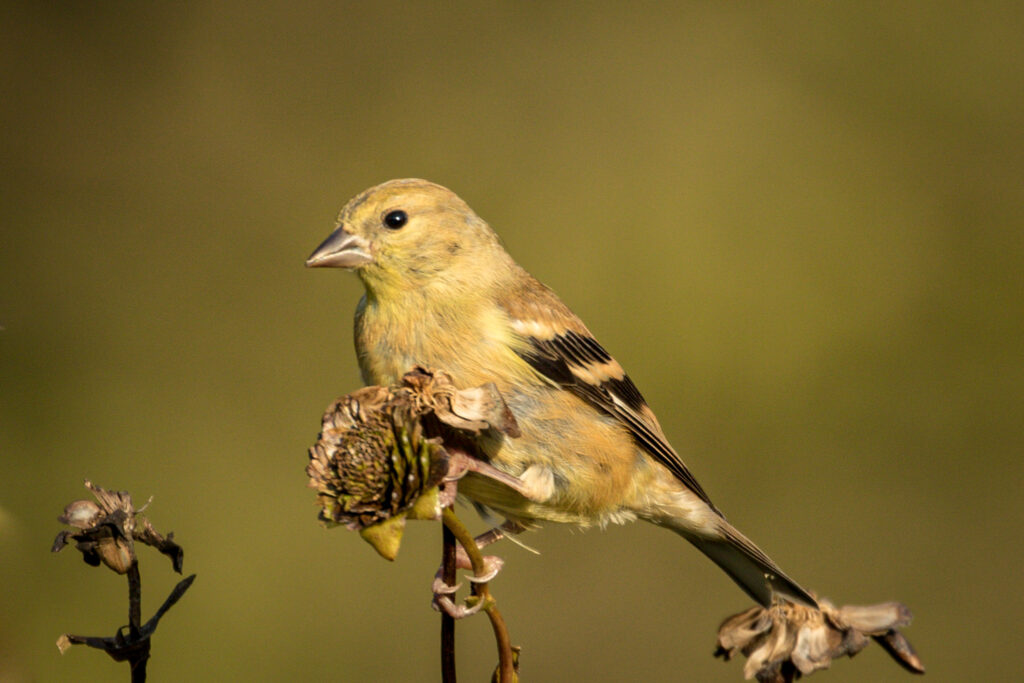
Level of Quality 3: The photograph was taken in a natural setting = Good Bird Photo or GreatBirdPic
Moving out into the field where most bird photographs are taken, and controlling for Focus, Lighting, and Composition, most are rated Good Bird Photo or GreatBirdPic. What’s the difference? It depends on what is captured with the bird in the photograph. Take the three Wood Duck photographs below. The first one shows a Wood Duck swimming on the water with no other features. Ho, Hum – a Good Bird Photo. Then compare it to the following two photographs. The first one showing the Wood Duck on a log vocalizing and the second one perched in a tree. Each are much more interesting and show the bird in its natural setting and would be rated GreatBirdPic.
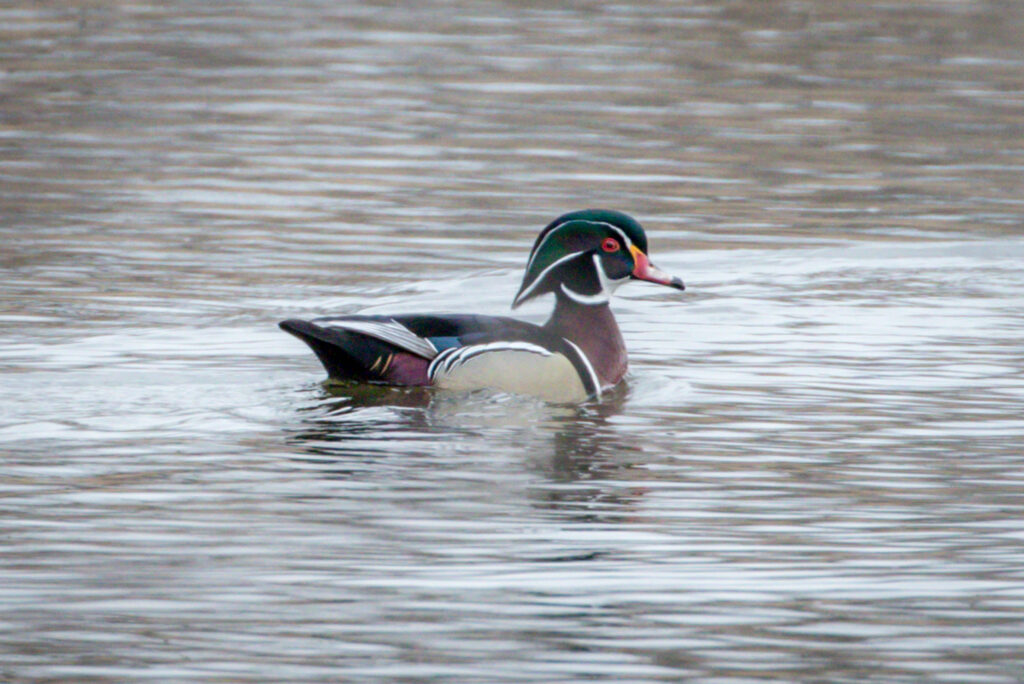
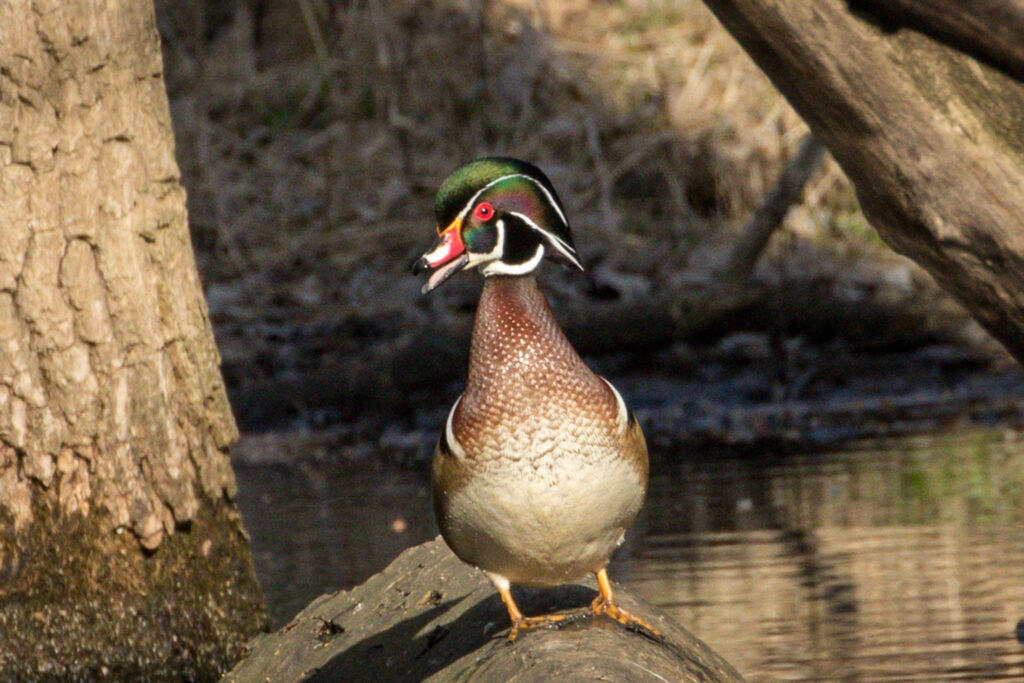
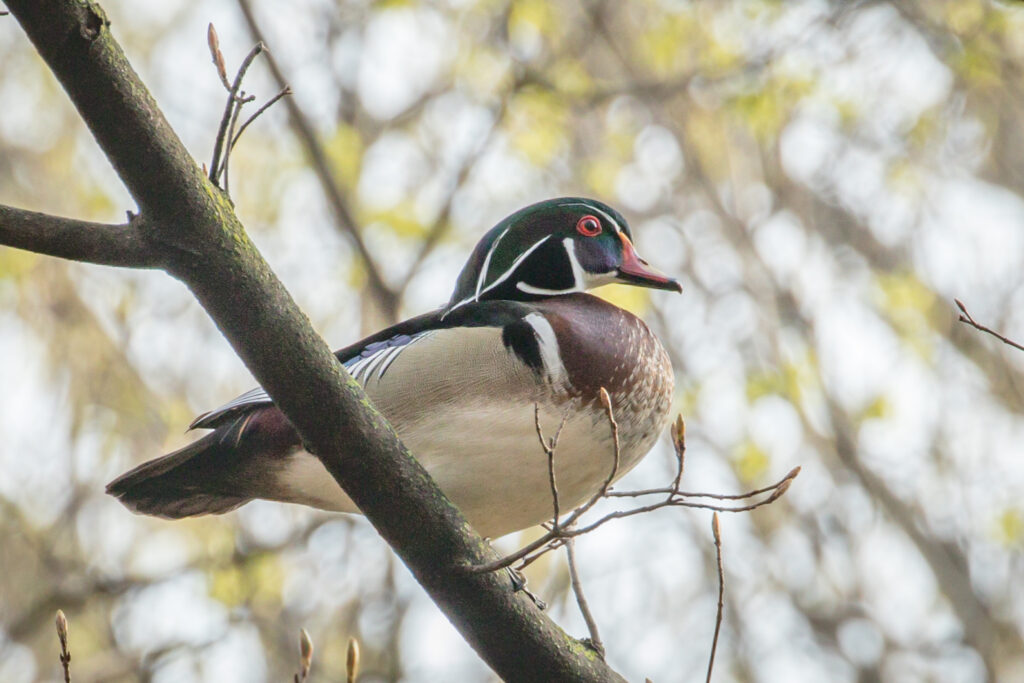
Even when the Focus, Lighting and Composition are good, the Setting does influence the final quality of the photograph. Take the two Ruby-throated Hummingbird images below. The first one is good, but due to the white background and lack of other interesting elements in the frame it would judged on the low end of the GoodBirdPic range. Then take a look at the next one, where the female Ruby-throated Hummingbird is on its nest. Again, good Focus and Composition, but this time the photograph would be rated on the upper end of the GoodBirdPic range because of the interest generated by the nest.
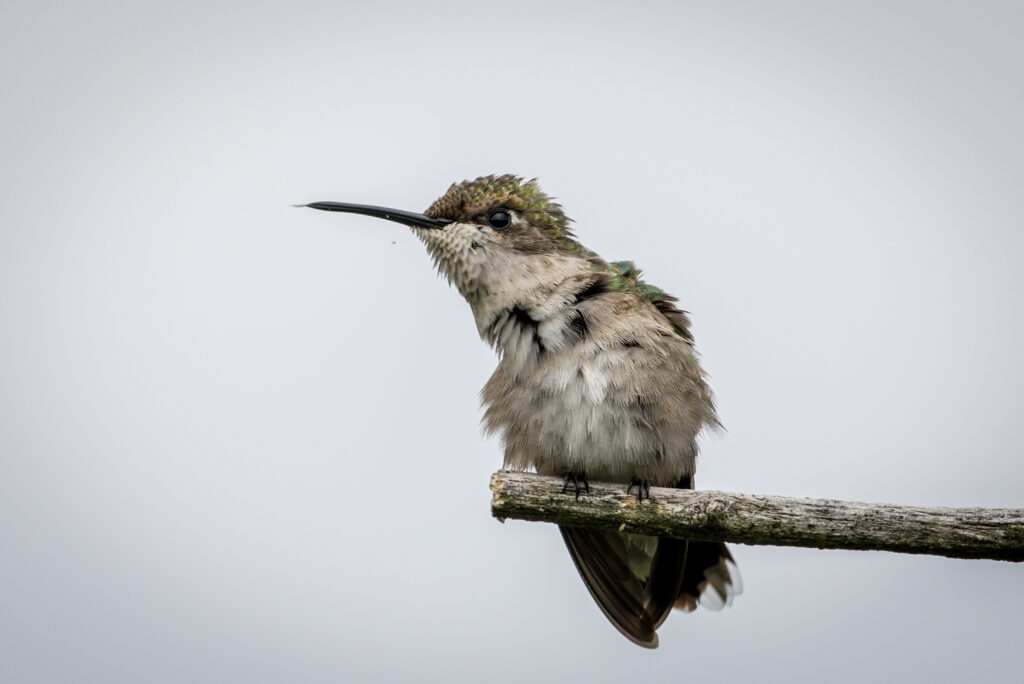
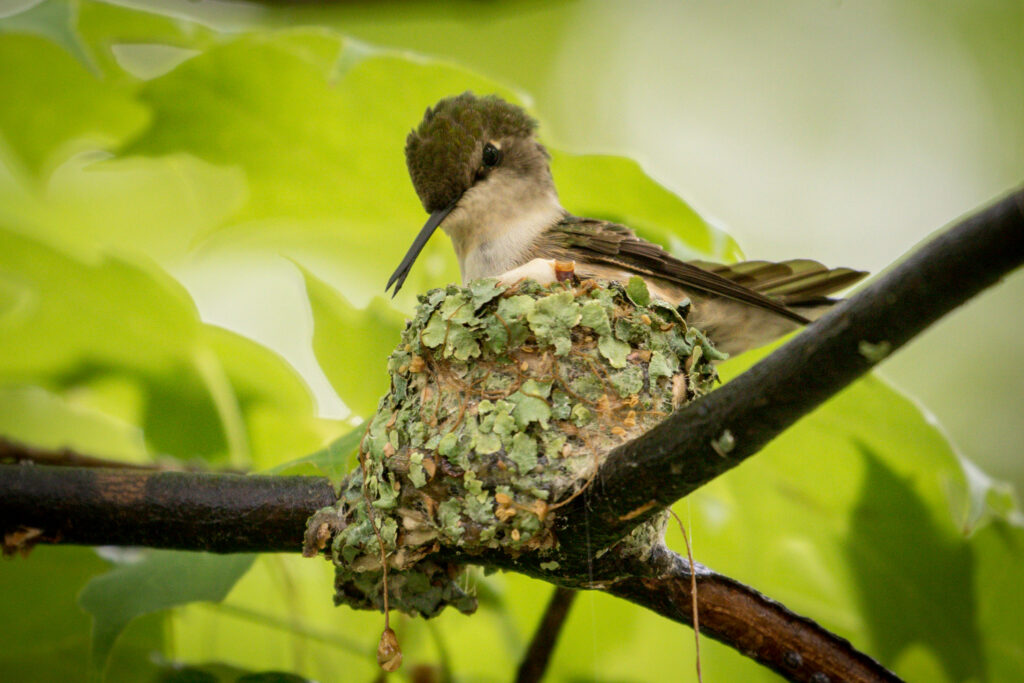
Level of Quality 4: The photograph illustrates the bird’s place in the environment = Award Worthy
Sometimes the photographer captures the bird immersed in the natural world around it. We can see that it has good Focus, Lighting, and Composition and as we study the picture we see more than the bird. The environment the bird is placed in enhances the overall quality of the photograph. Below are a couple of bird photographs that not only show the bird well, but gives us a look at the world around them. First is a Great Blue Heron in the fall in its typical habitat, then a Pine Siskin foraging for food in the thistle.
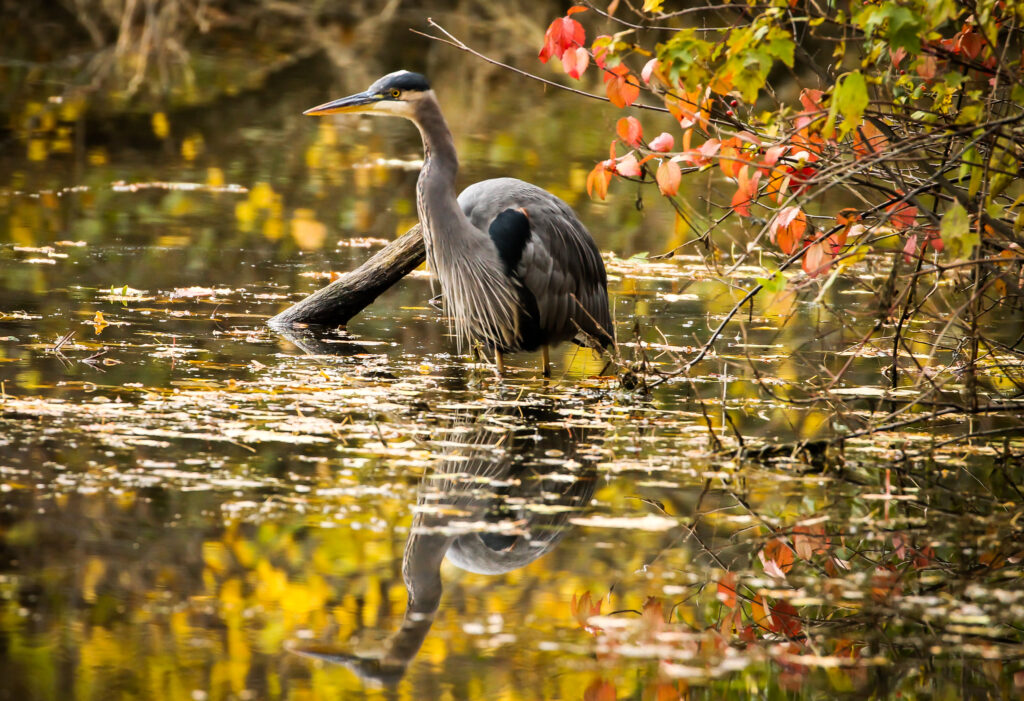
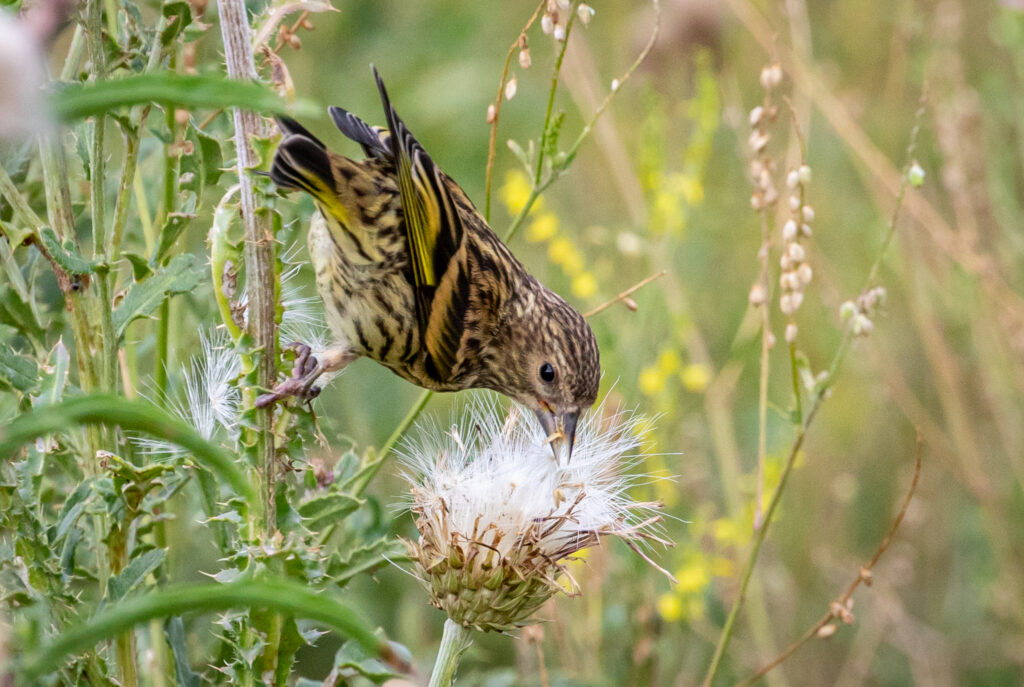
The Setting Component of the Content Image Characteristic is somewhat subjective. You can get a great picture of a bird at your backyard bird feeder but in my eyes, the quality of that picture suffers because of its unnatural setting. To me, half the fun of getting a great bird photograph is tracking it down in the wild and capturing a great image of the bird. When we are able to capture that image when the bird is surrounded by its natural habitat, the quality of the photograph is rated even higher.
This concludes the the review of the five Components of the Content Image Characteristic. Next we begin exploring the three Components of Artistic Quality, where we continue to apply some subjective attributes to the quality of our bird photographs.
Stay Safe. Go Birding. Take Pics. Share Here. Repeat.
Mike
If you would like to learn more about GreatBirdPics.com CLICK HERE. Members can upload their GreatBirdPics, communicate with other members, and receive regular emails about bird photography.